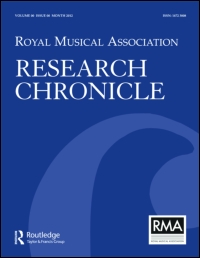Article contents
British Museum Add Ms. 15117: A Commentary, Index and Bibliography
Published online by Cambridge University Press: 01 January 2020
Extract
The British Museum manuscript Additional 15117 is well known to scholars and students and many pieces from it have been referred to or transcribed. The collection is usually described as simply a miscellaneous collection of songs and instrumental pieces ranging in date from the 1560s to about 1620. The British Museum catalogue itself suggests that the manuscript contains a very diverse and rather arbitrary collection of music. In the discussion which follows I suggest that the manuscript repays consideration as a complete collection, one compiled possibly over quite a brief period of time and reflecting a single interest: an interest in the music used in and associated with the popular theatre. Any conclusions one is tempted to draw about the total plan and intention of the collection from a study of individual pieces and their relation to one another must, of course, be tentative. However, several of the pieces in the collection - some of them well known from other sources - exist in rather unusual versions or forms and this requires explanation. The cumulative evidence of the conclusions one is led to draw about individual pieces does seem significant and therefore worth recording here even if only as hypothesis.
- Type
- Research Article
- Information
- Copyright
- Copyright © Royal Musical Association, 1969
References
Sources
References
Sources
References
Sources
References
Sources
Sources
Sources
References
Sources
References
Sources
References
Sources
Reference
Sources
Reference
Source
Sources
Sources
References
Sources
References
Sources
Reference
Sources
Source
Source
Source
Source
Sources
Reference
Sources
Sources
Reference
Reference
Sources
Sources
Sources
References
Sources
Sources
Source
References
Sources
Reference
Sources
Reference
Sources
References
A correction has been issued for this article:
- 3
- Cited by
Linked content
Please note a has been issued for this article.




